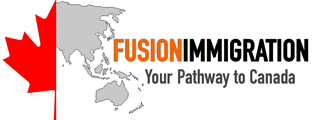Understanding National Occupation Classification (NOC) for immigration purposes
We often come across the term National Occupation Classification or NOC when we read topics about immigration to Canada. What is the National Occupation Classification (NOC) and why do we need to understand it? NOC is a list of all the occupations in the Canadian labor market. It is a tool that is used to classify occupations according to their skill level and broad occupational category. It describes each job according to skill type and skill level. The NOC is updated on a regular basis in partnership with Statistics Canada.
A four-digit code identifies the occupation. The first two digits reflect an important trait of the occupation it represents.
The first digit of the NOC code designates the broad occupational category. For example, occupations in Business, finance and administration occupations start with the digit 1. Management occupations, which are found across all broad occupational categories, start with the digit 0.
The 10 broad occupational categories, as represented by the first digit of the NOC code, are:
0 – Management occupations
1 – Business, finance and administration occupations
2 – Natural and applied sciences and related occupations
3 – Health occupations
4 – Occupations in education, law and social, community and government services
5 – Occupations in art, culture, recreation and sport
6 – Sales and service occupations
7 – Trades, transport and equipment operators and related occupations
8 – Natural resources, agriculture and related production occupations
9 – Occupations in manufacturing and utilities
The second digit of the NOC code represents the skill level for all occupations. A skill level is primarily based on the nature of education and training required to be employed in an occupation. This criterion also reflects the experience required to enter in the occupation and the complexity of the responsibilities involved in the work compared to other occupations.
The NOC consists of four skill levels, identified A through D, which can be identified using the second digit of the NOC code. Each skill level is assigned to two digits ranging from 0 to 7. For instance, when the second digit of a NOC code is a 0 or a 1, the skill level associated with the code is A.
| Skill level (alpha) | Skill level (digit) | Nature of education/training |
| A – Occupations usually require university education. | 0 or 1 | · University degree at the bachelor’s, master’s, or doctorate level. |
| B – Occupations usually require college education, specialized training or apprenticeship training. | 2 or 3 |
|
| C – Occupations usually require secondary school and/or occupation-specific training. | 4 or 5 | Some secondary school education, with up to two years of on-the-job training, training courses, or specific work experience |
| D – On-the-job training is usually provided for occupations. | 6 or 7 |
|
For immigration purposes, these are the main job groups:
- Skill Type 0 (zero): management jobs
- Skill Level A: professional jobs that usually call for a degree from a university
- Skill Level B: technical jobs and skilled trades that usually call for a college diploma or training as an apprentice
- Skill Level C: intermediate jobs that usually call for high school and/or job-specific training
- Skill Level D: labour jobs that usually give on-the-job training
Canada’s immigration programs use the NOC to decide if a job or type of work experience meets their eligibility. Immigration, Refugees and Citizenship Canada (IRCC) considers “skilled” jobs those with NOC Skill Type 0, A or B.
If you want to come to Canada as a skilled immigrant (Express Entry), your job, and the work you have done in the past, must be skill type 0, or level A or B to use Express Entry. The Express Entry system manages applications for permanent residence if you want be considered as a Federal Skilled Worker, under the Federal Skilled Trades Program, or under the Canadian Experience Class.
If you want to come to Canada as a skilled immigrant (Atlantic Immigration Pilot), your work experience must be skill type/level 0, A, B, or C.
If your job is skill level C or D, you may be able to come to Canada through other programs such as a provincial nominee, Atlantic Immigration Pilot etc.
Contact me for more information on your eligibility to immigrate to Canada using your skill type and level.
Contacts Us
Recent News
- Canada to reduce work experience requirements for caregivers and provide pathways to permanent residence February 10, 2023
- Pearson’s English language proficiency test receives approval for Canadian Economic Immigration February 6, 2023
- Temporary public policy creating two pathways to permanent residence to facilitate the immigration of certain Hong Kong residents February 6, 2023
- Work and Immigrate to Canada as an Internationally Educated Nurse January 31, 2023
- Post Graduation Work Permit: What You Need to Know January 18, 2023
